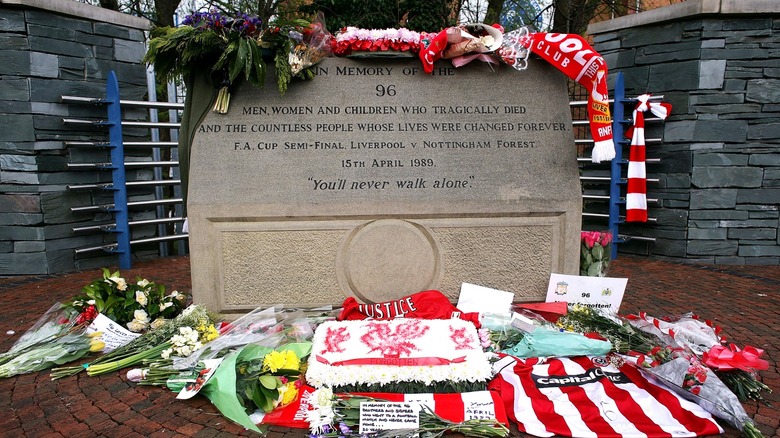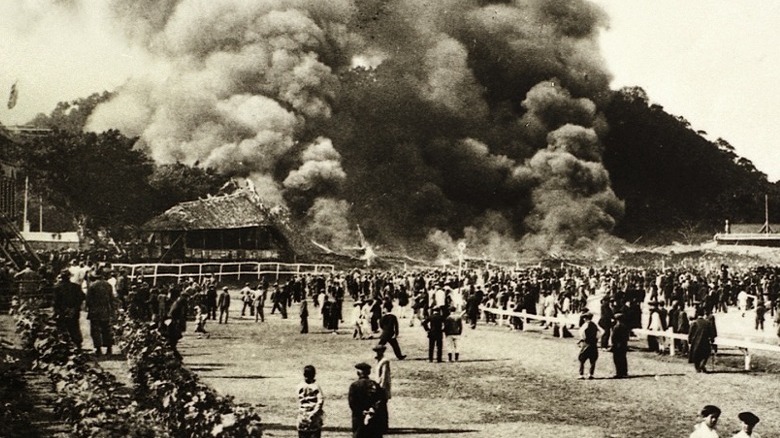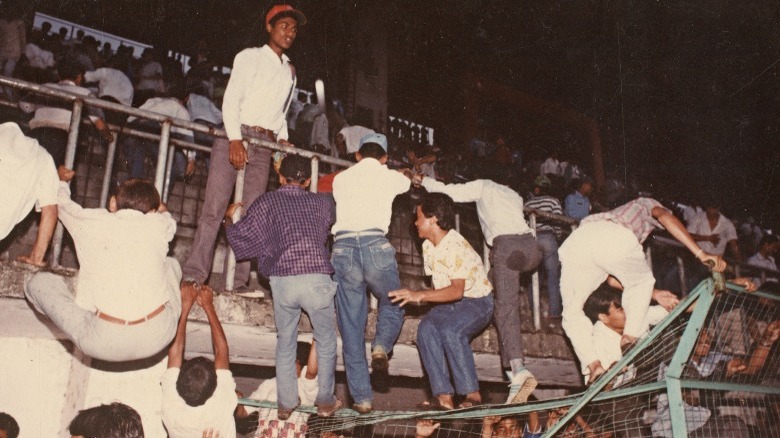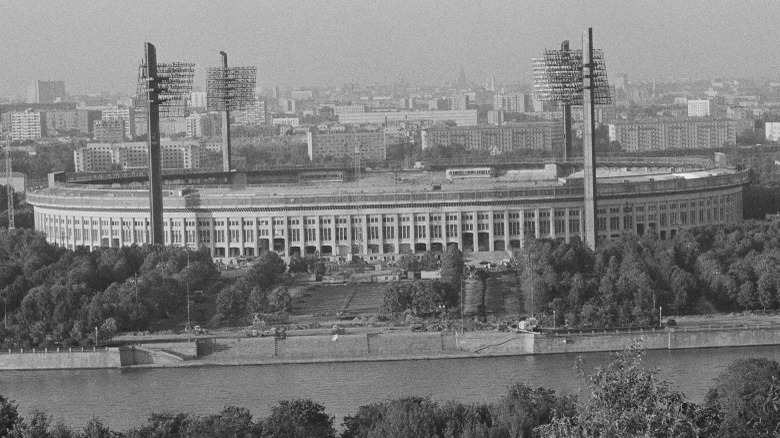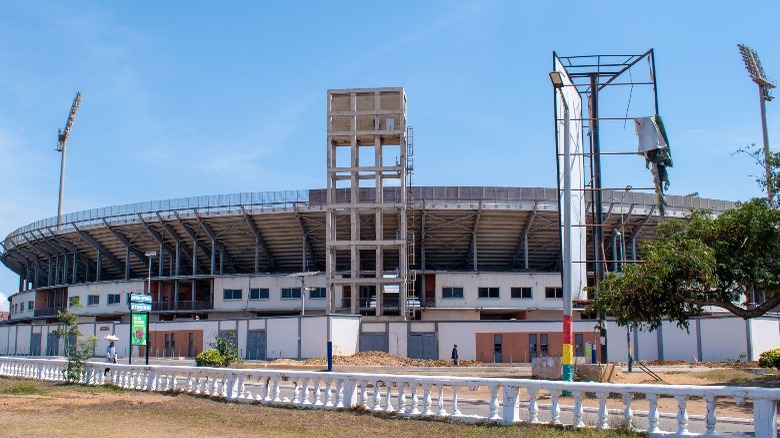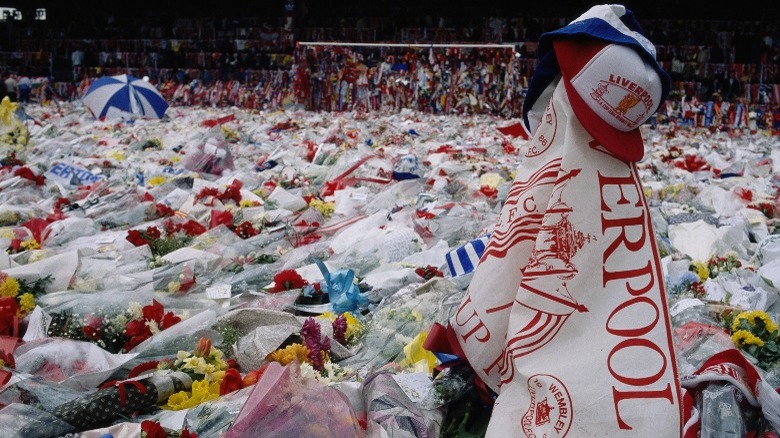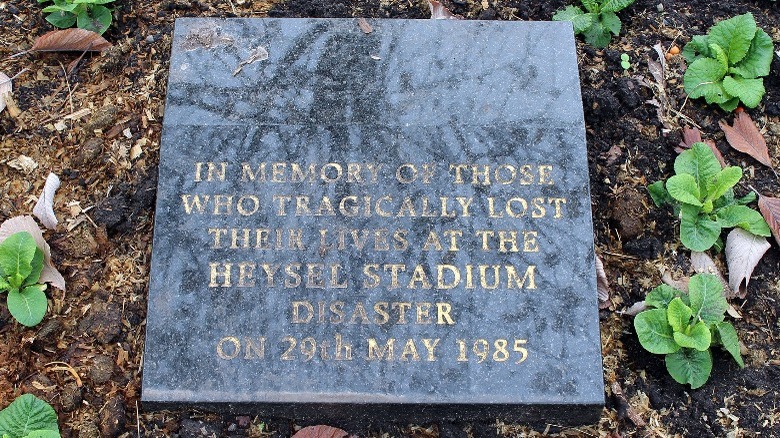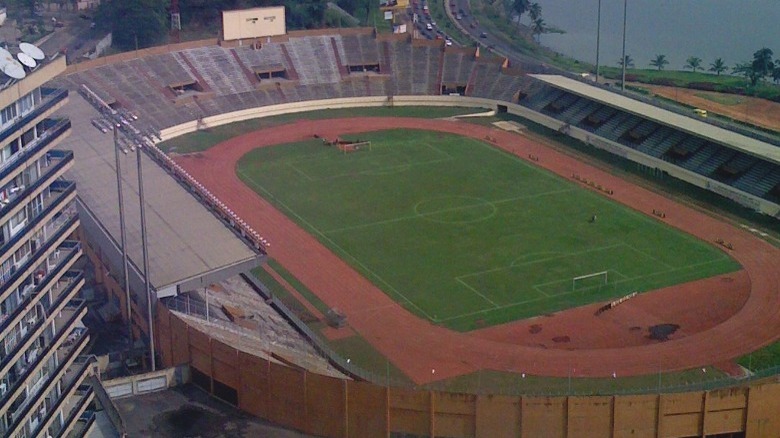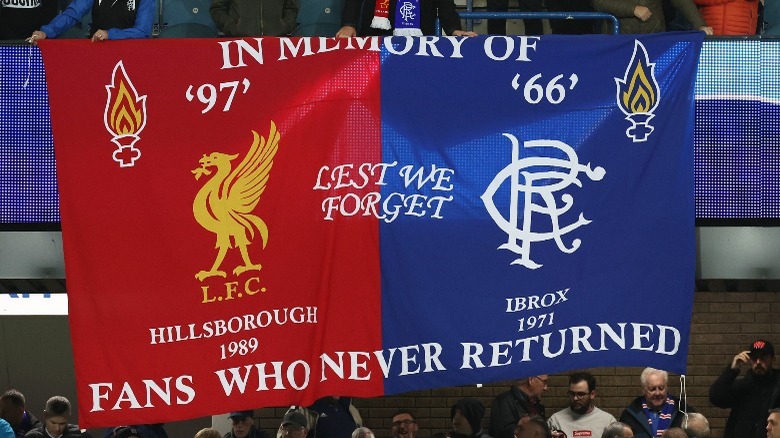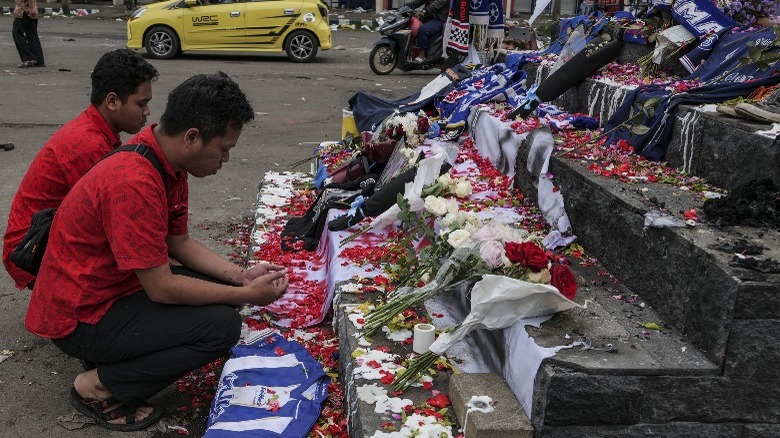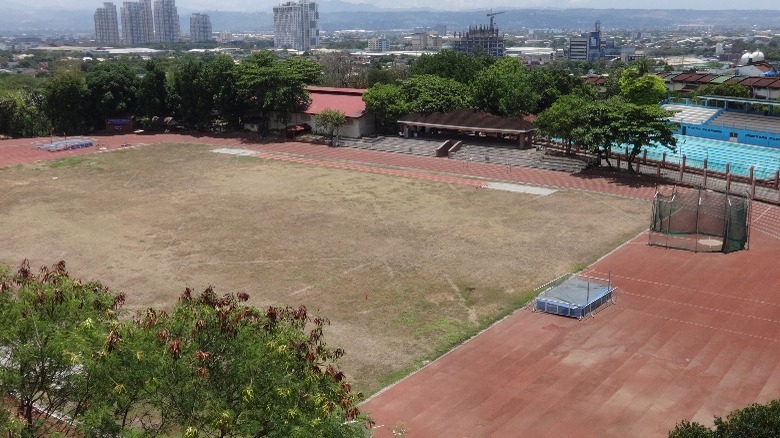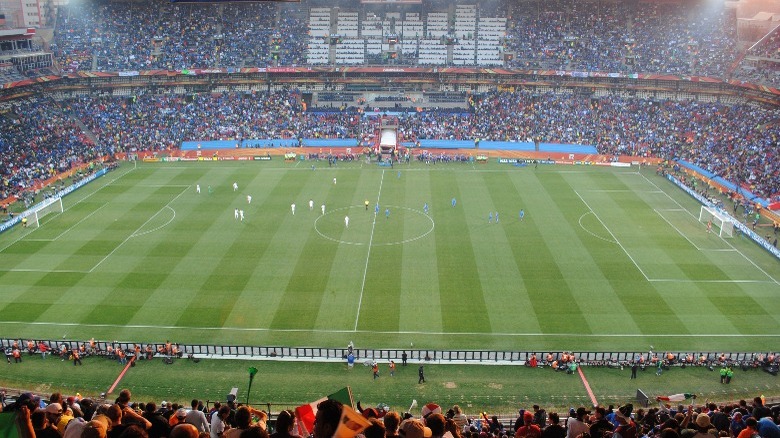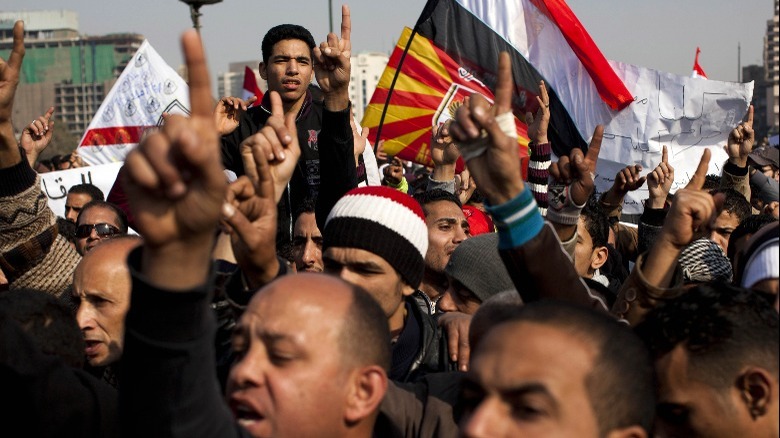History's Deadliest Stadium Disasters
It might sound surprising, but stadiums have been an important part of humans' lives for thousands of years. Some of the earliest stadiums in history were the purview of the Ancient Greeks and Romans, who created them in the millennium prior to the death of Christ. They used them for sporting games like the first Olympics, as well as for gladiator bouts and chariot racing. Some of the most famous Roman stadiums included the Circus Maximus and Colosseum, both of which have remnants that have survived through today.
The era of modern stadiums began in the 19th century when spectator sports became in vogue, coinciding with the rise of the modern Olympics. By the outbreak of the Second World War, there were several stadiums dotting everywhere from Europe to Oceania to the United States. Nowadays, stadiums host all kinds of events. These range from sporting events like football and soccer, to huge concert tours, and modern stadiums that regularly seat more than 50,000 people at a time.
Yet, as stadiums have gotten bigger and more popular, they have also become the site of some of the world's greatest tragedies. Overzealous or panicked fans have contributed to crowd crushes that have resulted in the trampling and stampeding of hundreds, including at times children, and unruly fans have started riots causing huge destruction. Looking back, these are some of history's deadliest stadium disasters.
The Happy Valley disaster of 1918
On February 26, 1918, the Hongkong Jockey Club was holding their annual derby races in the city of British Hong Kong. Yet, what started as a fun celebration at the horse races soon turned into one of the city's deadliest disasters. In the end, more than 600 people perished in the catastrophe, the majority of them either burned to death or were stampeded.
The first day of the races themselves went off fine, at first, but shoddy construction on the temporary stands led to problems on the second day. During one of the races, some of the stands started to collapse, causing a huge panic among the spectators and leading to a massive stampede. Like dominoes falling, more sections started to lose their structural integrity and crumple, turning the area into a disaster zone. To make things worse, a huge fire broke out when the structures fell onto cooking equipment.
The New York Times reported that about 100 people died in the stampede, while the rest of the 600+ deaths came from the fire. An inquiry into the disaster laid most of the blame on government officials for not taking the necessary safety precautions. Today, there is a memorial consisting of pagodas, a memorial arch, and a granite retaining wall, which pays tribute to the victims.
The 1988 Nepal hailstorm disaster
Soccer games are supposed to be celebratory times of unbridled fun and entertainment. Unfortunately, during a game on March 12, 1988, at the National Stadium in Kathmandu, Nepal, a tragic fiasco broke out, leading to the deaths of 93 people. A Nepalese team was playing against rivals from nearby Bangladesh in the Tribhuvan Challenge Shield Cup when a huge hail storm broke out. Being an open-air stadium there was nowhere for the fans to take shelter in the seats, leading to a huge stampede towards the exits.
However, inexplicably only one of the several exits was open, leading to a huge bottleneck at the only open one. Panic turned to chaos, and a huge crowd crush and stampede left 93 people — including two police officers and at least one child — dead. In addition to the deaths, there were more than 100 injured, but luckily all of the players managed to survive unharmed.
The storm was brutal enough that it uprooted trees and hurt communication lines throughout the city. A government inquiry quickly announced payouts to the victims' families, but angry crowds attacked police cars in protest of what they saw as a complete police failure.
The Luzhniki stadium disaster
In the more than four decades since the Luzhniki stadium disaster of 1982 in Moscow, Russia, many questions still remain. For years, the Soviet Union denied that an incident had taken place at all, only later releasing partial details and leaving in place much doubt. The date was October 20, 1982, and the Spartak Moscow and HFC Haarlem clubs were playing against each other at Luzhniki Stadium in Moscow. Authorities had separated the fan bases into two different parts of the stadium, which inadvertently ended up saving many lives.
On the Russian side, many of the fans decided to leave the game a few minutes early with their side ahead 1-0, but after a late Russian goal, many of them had a change of heart and wanted to come back and watch the end. However, when they tried to turn back they met even more fans who were leaving, creating a huge crowd crush. Officially, 66 people died in the pandemonium, the majority of them young adults and children, but some people claim that there were hundreds more.
The Dutch fans on the other side of the stadium avoided the chaos and did not suffer any casualties. Eventually, the stadium chief was held responsible, and many people — including several players — did not know about the disaster until years later and they were shocked to find out.
The Accra stadium disaster
During a May 9, 2001 soccer game in Accra, Ghana between Asante Kotoko and Hearts of Oak, one of the biggest tragedies in the country's history broke out. Kotoko and Hearts of Oak were known for being bitter rivals, and towards the end of the game Hearts of Oak was ahead by 2–1. Upset, many Kotoko fans began rioting and breaking things apart. The field became littered with broken objects, and soon the Kotoko fans went after Hearts of Oak fans, plunging the stadium into complete disorder. A stampede soon broke out, killing 126 and leading to hundreds more being injured.
A lack of open exits led to the crowd crush and stampede as the police tried to quell the tumult with tear gas and rubber bullets. The next day, the stairs were still covered in blood. Immediately, the police promised an investigation into the matter, but decades later there has still been a severe lack of accountability for anyone — both the officials in charge of the stadium and the rioters who caused the initial destruction.
Guatemala's World Cup disaster
As fans of World Cup soccer know, the event is prestigious and only held every four years, like the Olympics. In order to qualify, teams start playing each other years in advance. That was the case in Guatemala on October 16, 1996, when the Guatemala and Costa Rica national teams faced each other in a qualifying match for the 1998 World Cup. The event proved to be extremely popular in Guatemala City where it was being held, leading some people to engage in widespread fraud in the form of counterfeit tickets.
The stadium was only built for 47,000 people, but more than 10,000 additional fans tried to push their way in just before game time. The stadium was already at capacity, but the fans pushed their way past police officers, eventually caving in the main doors and causing a huge stampede and crowd crush. In all, 84 people died in the crowd crush and stampede and more than 100 were injured. Both the Guatemala and Costa Rica presidents were in attendance, and they officially suspended the game. The remaining games at the stadium were canceled, and there were three days of national mourning.
The Hillsborough Stadium disaster
Even today, the Hillsborough Stadium disaster of 1989 is still considered the worst sports disaster in United Kingdom history. The game took place on April 15 and saw Liverpool take on Nottingham Forest in a tournament game for the Football Association Cup. There was a massive crowd of onlookers trying to get in on the Liverpool side, and to relieve congestion police opened a new entrance. However, this entrance led directly to an already overcrowded terrace, creating a crowd crush.
The disarray caused officials to halt the match, and fighting soon broke out between Liverpool and Nottingham Forest supporters. The crowd crush happened on the Liverpool side, leaving the Nottingham Forest side free from most of the calamity. Ninety-five people died in the initial incident, and two others died from injuries they had sustained during it in 1993 and 2021. At first, the police blamed the Liverpool fans for the tragedy, and sensationalist stories ran accusing them of truly despicable acts.
However, the truth later came out. The first government report was published in March 1991, but that was thrown out in 2012 and a new investigation ordered. In 2016, the inquiry put all of the blame on the police, and in 2017 — nearly three decades after the disaster — several officials were charged with manslaughter and safety negligence, but most were acquitted at trial.
The Heysel stadium disaster
On a day that most Liverpool fans and supporters would like to forget, the Heysel Stadium disaster occurred on May 29, 1985, in Brussels, Belgium. That day, Liverpool (England) was taking on Juventus (Italy) in the 1985 European Cup Championship. It was a highly anticipated match, as Liverpool were the defending champions, but before it could get underway Liverpool's supporters started to attack the Juventus side.
Many supporters on the Juventus side ran away in panic in fear of the English hooligans, but that's where the real tragedy lies. In the disorder, a section of the stadium collapsed, killing 39 and injuring 600 — the majority of which were Juventus fans. The backlash was severe against England, and in fact, all English clubs — not just Liverpool — were banned from competing in the European Cup for several years. Later in 1989, several Liverpool fans were convicted of manslaughter and sent to Belgian jail for their roles in the rioting. Later, it was found that Belgian police also bore some of the responsibility, but it is still one of the blackest marks in English football history.
[Featured image by Rodhullandemu via Wikimedia Commons | Cropped and scaled | CC BY-SA 4.0]
The Felix Houphouët-Boigny Stadium disaster
For the residents of Abidjan in Africa's Ivory Coast, the 2012–2013 New Year's celebration was another in a long line of recent tragedies. The city was still trying to recover from a 2010–2011 civil war that claimed the lives of 3,000 Ivorians, but thousands of residents attended a New Year's Eve fireworks show at the Felix Houphouët-Boigny Stadium. The show itself went on fine and nothing went wrong, but afterward, a melee happened in the streets upon the crowd's exit.
Spurred by overzealous police officers, the crowd flew into a panic trying to run away from the stadium. As many as 50,000 people were in the area, leading to a huge stampede and crowd crush when people started fleeing the stadium. Many people were trampled in a gully beside the stadium as distressed mobs ran over them. Several of the victims were children and pregnant women, and in all more than 60 people died and hundreds were injured. Many Abidjanians blamed the police forces for the chaos, as they have a violent reputation in the country and may have caused the panic just with their presence.
[Featured image by Zenman via Wikipedia Commons | Cropped and scaled | GFDL]
The Ibrox Park disaster
On January 2, 1971, around 80,000 fans crammed into Ibrox Park in Glasgow, Scotland, to watch the hometown Rangers and Celtics take each other on in a soccer match. The stadium had previously been the site of crowd disasters in 1902, 1961, 1967, and 1969, during which dozens had been killed and injured, but there were still significant deficiencies in the stadium's design that caused safety issues ahead of the 1971 match. One of them was Stairway 13, which was responsible for most of the prior problems.
Stairway 13 was not equipped to handle massive influxes of crowds, and when everyone started exiting following the final buzzer anarchy broke out in the stairway. As thousands had already started to make their way down the stairs the metal railings at the top failed, causing people to fall forward onto those below them. This created a huge crowd crush and stampede, leading to many people being trampled and hurt. In the pandemonium, 66 people died and 145 lay injured. Not until Hillsborough nearly two decades later would U.K. soccer again see such tragedy.
The Kanjuruhan Stadium disaster
In one of the most recent tragedies in Indonesian history, on October 1, 2022, a massive stampede and crowd crush occurred during a soccer game at Kanjuruhan Stadium in Malang. The match was between Arema FC and Persebaya Surabaya, and Surabaya won in an upset. In the celebration, several Surabaya fans ran onto the field, which prompted a vicious response from the city's police force.
Instead of peacefully handling the situation, the Malang police responded by beating spectators with batons and firing canisters of tear gas at them. The tear gas induced a frenzy of confusion, causing a huge stampede toward the exits. Only two of the exits were open, resulting in a massive bottleneck. More than 130 people died in the incident, including 33 children 17 years old and younger.
In the aftermath, the national police launched a huge investigation, which resulted in the immediate suspension of several officers, including the local police chief. Just a few weeks later, the government decided to demolish the stadium so they could build a new one that would comply with international standards.
The Wowowee stadium disaster
The Wowowee stadium disaster happened on Saturday, February 4, 2006, in Manila, Philippines, at the Philsports Arena. Fans of the TV show "Wowowee" had arrived at the stadium hoping to win prizes from the show. Roughly 30,000 people showed up for the event, and many had spent days lining up for tickets for the game show hoping to win one of the various prizes.
Trying to get tickets for the raffle, people in the crowd started pushing forward toward the front gates. Unfortunately, this caused a huge crowd crush, resulting in the deaths of 74 and injuries to more than 500. Many people were trampled under the massive crowd waves, and police struggled to get control of the situation. An immediate investigation into the incident was launched, which included the host of the game show, Willie Revillame.
The event was the one-year anniversary of the show's debut, and of the 30,000 who showed up only the first 300 were actually eligible to participate. Still, even as the crowds grew authorities neglected to do anything as they swelled to 30,000 in the days before the event, leading some to predict a catastrophe was inevitable.
[Featured image by Patrickroque01 via Wikimedia Commons | Cropped and scaled | CC BY-SA 4.0]
The Ellis Park stadium disaster
The worst disaster in the history of South African sports occurred on April 11, 2001, at the Ellis Park stadium in Johannesburg. Forty-three people were killed and many more were injured in the incident, which happened as fans tried to rush into the stadium to see the game. The Kaizer Chiefs were taking on the Orlando Pirates in what was a crucial game for the season between two of the country's biggest teams, and the stadium was absolutely packed as a result.
According to an official government inquiry, there was a massive traffic jam leading up to the event that caused many people to arrive late. In addition, even though the stadium could only hold 60,000 people there were 80,000 fans there looking for tickets, with the vast majority of them planning on buying their tickets the day of. Following an announcement that tickets had been sold out, there was frustration in the crowd, and soon thousands tried to force their way in.
A massive crowd crush ensued, killing several — including at least one child. The inquiry pointed to unpreparedness for the huge crowd and mismanagement by the police as the main causes of the disaster.
[Featured image by George Groutas via Wikimedia Commons | Cropped and scaled | CC BY 2.0]
The Port Said stadium disaster
When politics and sports collide the results are often ugly, and in the case of the Port Said stadium disaster, they turned deadly, too. The date was February 1, 2012, and two rival teams from Egypt — El Masry from Port Said and Al Ahly from Cairo — faced off against each other in a soccer match. Al Ahly ended up on the losing end of the match, and soon their fans also faced the wrath of the El Masry fans, too. Armed with knives, clubs, and stones, the El Masry fans, seemingly with the indifference of the police, terrorized the Al Ahly players and supporters after the match.
They stormed the field and started assaulting their rivals, and more than 70 ended up dying in the melee. Police officers were seen standing around doing nothing as civility and decorum crumbled around them, with Al Ahly stars openly questioning their lack of control. Eventually, the government sent in the army to quell the disorder, but not before things had completely deteriorated.
Allegedly, the police purposefully allowed the El Masry supporters to bring in weapons, and some raised questions about if the police allowed the violence to occur as an act of revenge on the Al Ahly supporters, who were previously linked with anti-government protests. Protestors immediately took to the streets following the incident, and 11 people were sentenced to death for their roles. The rulings were upheld by the Egyptian Supreme Court.
